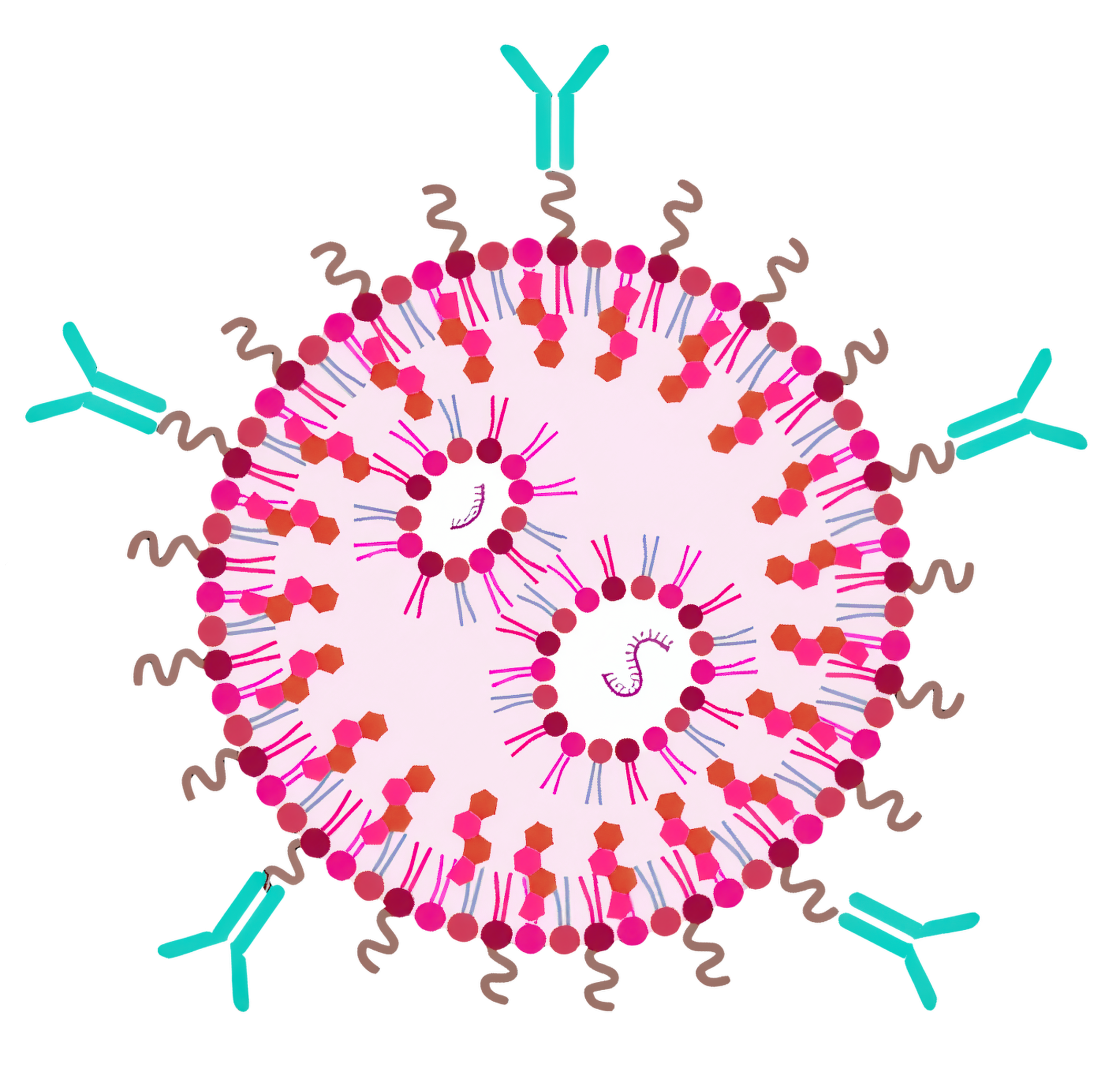Applications
The power of UV-Vis spectroscopy is inherent in its broad applicability and the sample types it can be applied to. If your sample scatters but has an underlying UV-Vis signal, then CloudSpec might be just for you.
Drug loading of intact Nanoparticles
Measuring drugs in nanoparticles is often complex and slow,
but CloudSpec speeds things up by analysing intact
particles without breaking them apart.
For RNA quantification of Lipid Nanoparticles (LNPs),
UV/Vis methods can struggle due to scattering from the
particles. CloudSpec skips the scatter, making encapsulated
RNA measurement as easy as it is with free RNA.


Antibody-Targeted RNA-LNPs - Simultaneous AB and RNA Quant
Targeting RNA to specific cells enhances therapeutic efficacy, with antibodies on lipid nanoparticles (LNPs) being an attractive approach. However, analysis involves complex assays and sample preparation. CloudSpec streamlines this by simultaneously analysing multiple components, provided their spectral properties don’t overlap.
CloudSpec quantifies the antibody and RNA in an LNP formulation in 15 seconds, accurately detecting even minor spectral differences without relying on curve-fitting or the large errors caused by scatter subtraction.
Why UV-Vis doesn’t work for LNPs
Lipid Nanoparticles (LNPs) are typically around 60-120nm in size, which causes them to scatter light significantly at UV wavelengths - right where RNA and other biological molecules tend to absorb light. This causes an unpredictable overestimation of the RNA assay, as shown on the left.


Measuring total RNA in LNPs with SFA
By measuring UV absorption independent of scattering, SFA determines the total RNA concentration in the sample without the need to disrupt the particles using a surfactant.
As seen on the right, the SFA spectrum of an RNA-loaded LNP has no scattering artefacts and matches the pure RNA spectrum.
Quantifying Drug-Loading in Intact LNPs with CloudSpec
CloudSpec measures RNA concentration using the well-known A260 absorption feature.
For a typical formulation (left), total RNA concentration is directly measured at 260nm by SFA, which eliminates scatter interference.
The spectra of empty LNPs and RNA in buffer clearly match the loaded LNP spectrum.
.png)
.png)
RNA-LNP concentration: Comparing CloudSpec to Ribogreen
Measuring RNA in LNPs often relies on the RiboGreen fluorescence assay, but this approach is slow and can lead to errors and inconsistencies. SFA enables a precise match with the pure RNA spectrum in a dilution series experiment.
SFA shows highly accurate and linear (R² = 0.9995) results with repeat measurements varying by less than 1%.
RiboGreen, by contrast, has greater inconsistencies between repeats and biased concentration estimates, likely due to incomplete RNA recovery during extraction.
Other Applications

Metal Nanoparticles
UV-Vis is a common tool for particle size, concentration and batch consistency, but it's limited in analysis because only the extinction of the particles is measured.
CloudSpec’s extinction, absorption and scattering spectra yield much more information about the sample, including improved particle size, particle number density and particle engineering.
Bacterial and Cell Growth Monitoring
UV/Vis is ideal for biological samples, protein and DNA/RNA concentrations, chromophore analysis and more. Because most biological solutions, such as cell cultures, are inherently turbid due to light scattering from cells, aggregates and other biological components, spinning down of samples is often required to clarify the liquid.
With SFA measurements you can measure the whole content of the sample at the same time without any separation.

